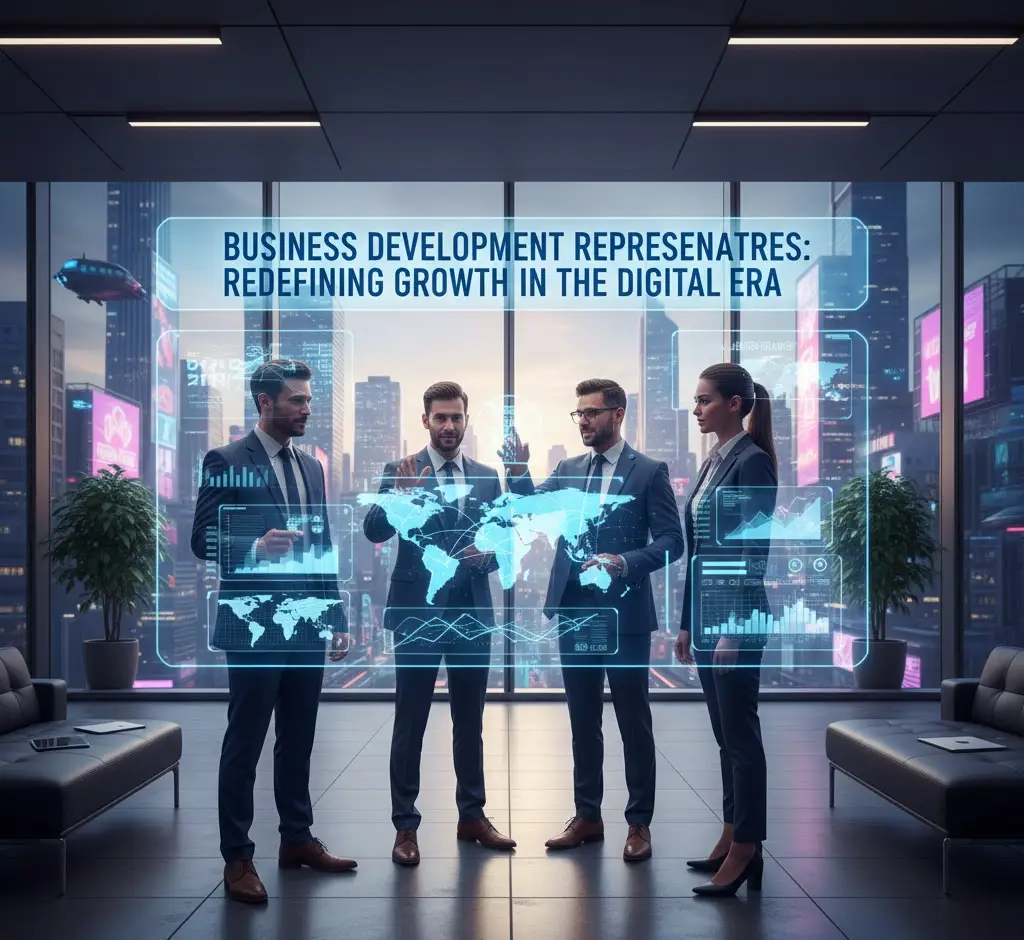Introduction: A New Era for Business Growth
The digital economy is developing quickly, and the Business Development Representative (BDR) is at the front of new advancements and growth. In the past, the BDR was seen mostly as the ‘first point of contact’ in the sales funnel, but this position is changing to encompass broader and more strategic roles.
Every corner of the business world is being reshaped with artificial intelligence, automation, and data analytics, and today’s BDRs have expanded far beyond just generating leads. They have transitioned into growth strategists who combine personal relationships with technology. Instead of simply booking meetings, BDRs create intelligent customized paths to guide prospects to profitable outcomes for their businesses.
This development of new technology shows a fascinating new shift: business development is about outreach, but it is also about insight, and the adaptive orchestration of technology and empathy.
How It’s Changing the Industry
Today’s BDR operates in an environment where information is plentiful, competition is cutthroat, and buyers are more educated than ever. This means that using old strategies like cold calling and generic emails is gone, and instead more thoughtful exploration and engagement strategies are being invoked.
Technology is the most influential factor in all of these changes. For example, driven by AI, automated systems are able to identify leads and automate repetitive outreach. This means that predictive analytics are able to guess which leads are most likely to close, and then integrated CRM analytics provide all customer journey touchpoints.
Humans and intelligent BDR machines are now able to work smarter and provide BDRs more time to talk with leads instead of targeting wide. This predictive and integrated technology provides BDRs with more intuition concerning each potential customer and the means to focus their attention and personalize each touch.
Technology is not replacing the BDR. It is replacing the things that are most time-consuming and boring in the BDR’s work.
Benefits for Professionals and Businesses
For companies, the redesigned BDRs purpose is a complete jump in efficiency and ROI. Automation and self-service tools cut down on workflows for administrative tasks, freeing employees to focus on more valuable work, like building networks and strategies.
Thanks to modern CRMs and analytics tools, managers see pipeline performance like never before. Insights gained from the data facilitate territory planning and resource allocation, as well as forecasting.
For BDRs, this is a chance to grow as admins in their role as using automation for prospecting is done. Training can then shift focus to negotiation, consultative selling, and digital communication, creating a more strategically and empowered workforce.
Shortened sales cycles, improved cooperation between sales and marketing, and higher conversion rates, can all be reported by companies that are willing to adjust their processes.
An Example of a Success Story and a Case Study
Think about a middle-sized SaaS company that used AI-powered lead scoring for business development. In about three months time, their BDR team reduced the time spent on manual prospecting by 40%! They were able to double their meeting to opportunity conversion rate by focusing on the top tier leads the system had identified.
Another global logistics company implemented conversational AI for prequalifying inbound leads and then BDRs were able to personalize the outreach. This resulted in a 30% increase in the sales pipeline volume in the first quarter.
These examples show that when technology and human skills come together, the benefits for the business are overwhelming.
The Challenges and the Limitations
The transformation of the BDR role does come with some challenges.
The first one is data overload. BDRs have so much information at their hands and analytical overthinking can paralyze action. Companies will need to make sure their tools are easy to understand while actioning business insights.
Another one is the automated outreach. Over focusing on automation can lead to robotic outreach to clients and will remove the custom human touch. In relationship building, maintaining some emotional outreach is essential and the automated tools should only replace the repetitive tasks.
To wrap things up, please remember that training and adaptation go hand in hand. While training involves the acquiring and development of new skills, in this case, the new skills must pertain to the new advances in technology. The next set of BDRs will need to focus their training on the new advances in AI technology, social selling techniques, and enhanced virtual tech interfaces that the industry provides, as these will become the new standard in the industry.
The Future Outlook
There is no doubt that the BDR role will continue to develop positively in the near future. AI assistants will manage initial conversations, allowing the BDR to only focus on strategic conversations, and there will be meetings in virtual reality. BDRs of the future will have technology that will guide their decisions to align with the needs of the customers, while their creativity will guide the interaction and their technology will aid the customer.
The connection will remain and be enhanced by technology. The BDR of the future will be viewed as a hybrid BDR, and will be part of a new group in an organization that is strategic toward steady and sustainable growth.
Conclusion
Today, the BDR is no longer a gatekeeper to sales; instead, he offers prospects a new conception of BDR as an architect to the shaping of new opportunities in a fast-paced environment. The BDR increases efficiency by integrating technology with emotionally-driven personal interaction, focusing on personalized relationships to strengthen business growth.
As companies keep innovating, those who spend time and resources on empowering their BDR teams (training, tools, and strategic alignment) will be frontrunners in the next wave of business transformation. The focus in the future will not be on outreach, but on engagement.
FAQs
1. What does a Business Development Representative do?
A BDR builds relationships for potential clients, generates qualified leads, and kicks off the sales cycle by connecting prospects with an account executive.
2. How is technology changing the BDR role?
Automation, AI, and analytics technologies are helping BDRs sharpen the focus on high-value leads, outreach personalization, and overall sales pipeline efficiency.
3. What skills are essential for modern BDRs?
Modern BDRs must possess the key skills of communication, some data literacy, working with a CRM, and adjusting to technology changes.
4. What industries benefit most from BDRs?
The SaaS, finance, logistics, healthcare, and technology industries are the most reliant on BDRs to develop their market presence and lead generation.
5. Will AI replace BDRs in the future?
AI will replace some automation and task repetition, and offer insights, but will not replace BDRs. AI will enhance BDRs by letting them focus on strategic tasks and relationship-building.
Also Read: AI-Powered Travel Assistants: Personalized Travel Planning in 2026



